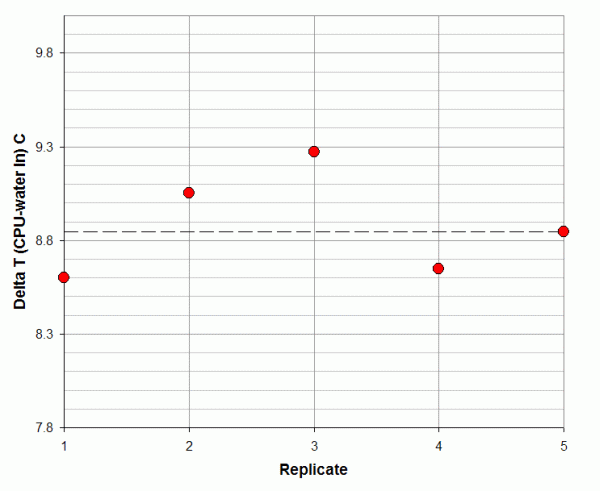|
|
|
|
 Little River Cascade SS Waterblock Review Little River Cascade SS Waterblock Review
|
|
Date Posted: Jul 8 2004
|
|
Author: pHaestus
|
|
|
|
|
Posting Type: Review
|
|
Category: H2O and High End Cooling Reviews
|
|
Page: 1 of 1
|
|
Article Rank:No Rank Yet
Must Log In to Rank This Article
|
|
|
|
|
Note: This is a legacy article, imported from old code. Due to this some items on the page may not function as expected. Links, Colors, and some images may not be set correctly.
|
|
|
Little River Cascade SS Waterblock Review By: pHaestus
|
|
|
Little River Cascade SS Waterblock Review
By: pHaestus 7/08/04
|
|
|
 The Cascade SS is a spare no expenses silver version of the Little River Cascade. It features the same single inlet/outlet design, jet/cup cooling
mechanism, and poly top construction with the somewhat more common copper Cascade. Cathar kindly loaned me the Cascade SS for testing; it has subsequently been returned to its home in
Australia. These blocks are no longer produced commercially, but many of our forum regulars own the Cascade SS so it is of interest to see how it compares to other blocks I have tested. Here's
what Cathar had to say about the Cascade SS: The Cascade SS is a spare no expenses silver version of the Little River Cascade. It features the same single inlet/outlet design, jet/cup cooling
mechanism, and poly top construction with the somewhat more common copper Cascade. Cathar kindly loaned me the Cascade SS for testing; it has subsequently been returned to its home in
Australia. These blocks are no longer produced commercially, but many of our forum regulars own the Cascade SS so it is of interest to see how it compares to other blocks I have tested. Here's
what Cathar had to say about the Cascade SS:
"The solid 99.998% pure-fine-silver based Cascade SS was a careful refinement of the standard copper Cascade design to extract the most out of
the design to make best use of the semi-precious metal. The final differences are visually quite small, typically being barely detectable to the human eye even if the two blocks are held opened-up and side-by-side.
The jet intakes into each cup were tweaked to more evenly balance the jet flow distribution to more accurately match the bulk heat load distribution patterns under the jetted area - which as a byproduct also
lowered the block's pressure drop while improving performance. The cupped area was carefully "ported" to further lower the block's pressure drop without impacting cooling performance. The thickness of the silver
material between the CPU die and the cupped area was altered to take better advantage of the silver's higher thermal conductivity over copper. Finally the block bases were lapped especially carefully by hand,
taking about 1 hour in total, down to a 2000-grit grade level, and buffed for a near-mirror finish. The near-mirror finish offered no performance benefit at all, but when you're dealing with silver, how can you resist?!."
Cathar of Little River Waterblocks
I had not used a silver waterblock before; they are extremely attractive. In fact, the Cascade SS was so
shiny that it was difficult for me to take good pictures of the block. Picture quality aside, the fit and finish of
this block was excellent in all respects. Since this block was pulled from a system rather than being new, the baseplate no longer had a mirror finish.
|
|
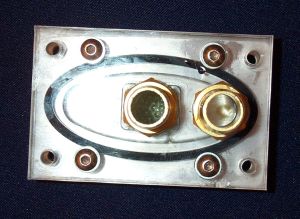 |
|
|
|
|
|
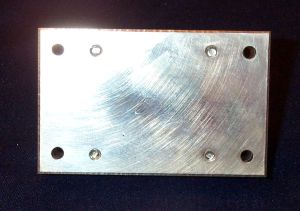 |
|
|
|
|
Test Results and Observations
|
|
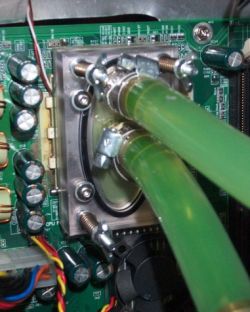 I finally got around to putting together a summary of my testing methods and equipment, so if you want to get the full
lowdown on the Procooling test bench then just give that a read. I used the same springs and wingnuts with the Cascade SS that I have used on all previous "4 hole design"
waterblocks. Here is a bit more information on the "delta T" numbers that are used in all the graphs that follow: I finally got around to putting together a summary of my testing methods and equipment, so if you want to get the full
lowdown on the Procooling test bench then just give that a read. I used the same springs and wingnuts with the Cascade SS that I have used on all previous "4 hole design"
waterblocks. Here is a bit more information on the "delta T" numbers that are used in all the graphs that follow:
I measure CPU diode temperature, the temperature of the water at the waterblock's inlet, and the water flow rate. By
plotting the difference between CPU temperature and water temperature, we can normalize all testing. This is required because water temperatures may vary from day to day in my
testing room. The closer that this delta T (engineering-speak for temperature differential) is to 0, the better the waterblock is performing.
The first test I conduct is the variation of waterblock performance over repeated mounting replicates at 1.50 GPM flow rate:
|
|
|
|
Over five mountings the average temperature difference between CPU diode and water inlet was 8.86C, and the standard deviation was 0.26. This is a big
larger deviation than in some of the other recent tests; I suspect that the thin baseplate makes getting "the perfect mount" somewhat a finicky activity.
The next test conducted is the relationship between waterblock performance and flow rate:
|
|
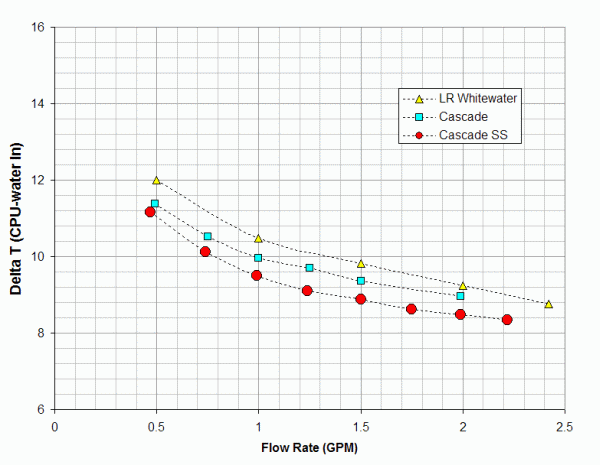 |
|
For comparison the other Little River waterblocks are also shown. It is clear from this graph that more than block material is responsible for the Cascade
SS's performance boost over my copper Cascade. Note that the maximum flow rate attained in my test loop was 2.25GPM with the Cascade SS vs. 1.98GPM with the original Cascade. At 0.5GPM, the performance boost of the
SS compared to the Cascade is very slim, but at higher flow rates an improvement of around 0.4C is observed.
Of course what everyone really wants to see is the performance of the Cascade SS waterblock plotted versus other commercial blocks I have tested:
|
|
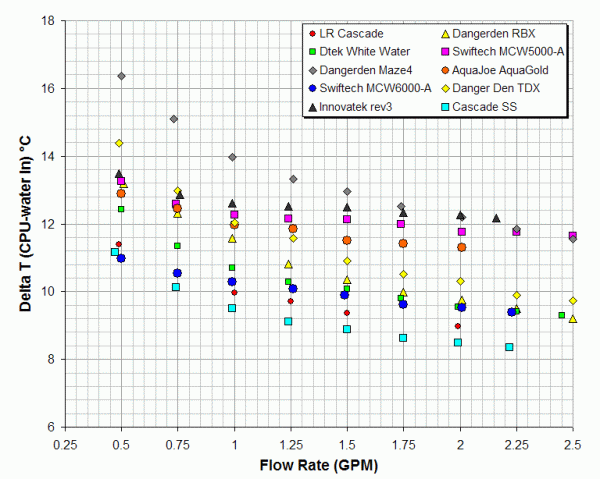 |
|
This graph is getting pretty busy, but not in the region of the Cascade SS. At 0.5GPM, the Swiftech MCW6000-A slightly outperforms the Cascade SS, but at
1.00 GPM and above the SS performance is separated from all competition.
I suppose this review is really academic as the blocks aren't available any more and were priced out of the budget of most of us even when they were
available. It certainly is interesting to see how much performance could be tweaked out of the Cascade design with a change in material and (probably more importantly) slight changes to its internal design.
Thanks again to Cathar for loaning me the Cascade SS for testing.
|
|
|
|
| Random Forum Pic |
 |
| From Thread: Why does this "new" heater core look like crap?? |
|
| | ProCooling Poll: |
| So why the hell not? |
|
I agree!
|
 67% 67%
|
|
What?
|
 17% 17%
|
|
Hell NO!
|
 0% 0%
|
|
Worst Poll Ever.
|
 17% 17%
|
Total Votes:18Please Login to Vote!
|
|






 Little River Cascade SS Waterblock Review
Little River Cascade SS Waterblock Review
 The Cascade SS is a spare no expenses silver version of the Little River Cascade. It features the same single inlet/outlet design, jet/cup cooling
mechanism, and poly top construction with the somewhat more common copper Cascade. Cathar kindly loaned me the Cascade SS for testing; it has subsequently been returned to its home in
Australia. These blocks are no longer produced commercially, but many of our forum regulars own the Cascade SS so it is of interest to see how it compares to other blocks I have tested. Here's
what Cathar had to say about the Cascade SS:
The Cascade SS is a spare no expenses silver version of the Little River Cascade. It features the same single inlet/outlet design, jet/cup cooling
mechanism, and poly top construction with the somewhat more common copper Cascade. Cathar kindly loaned me the Cascade SS for testing; it has subsequently been returned to its home in
Australia. These blocks are no longer produced commercially, but many of our forum regulars own the Cascade SS so it is of interest to see how it compares to other blocks I have tested. Here's
what Cathar had to say about the Cascade SS:


 I finally got around to putting together a
I finally got around to putting together a 